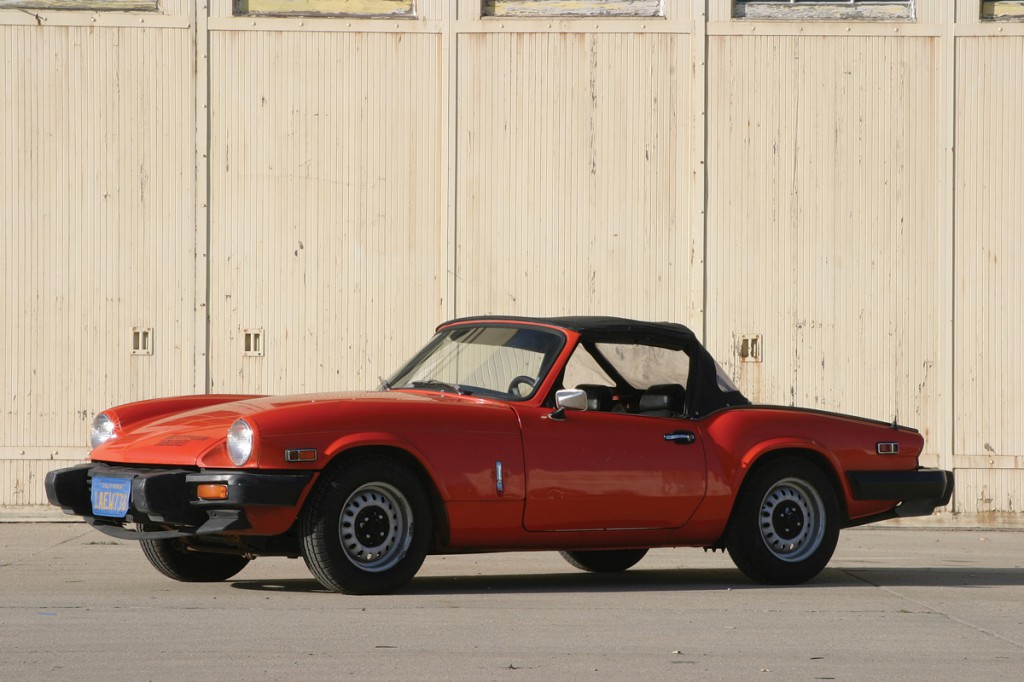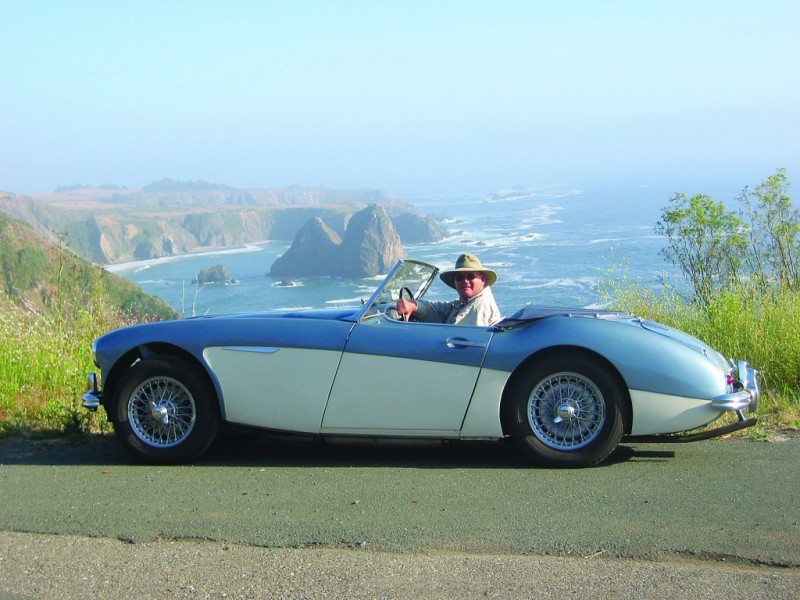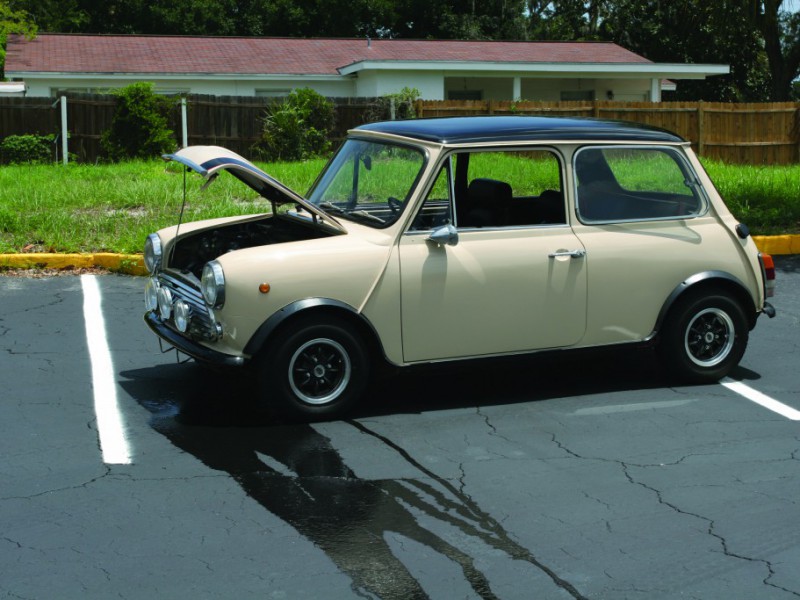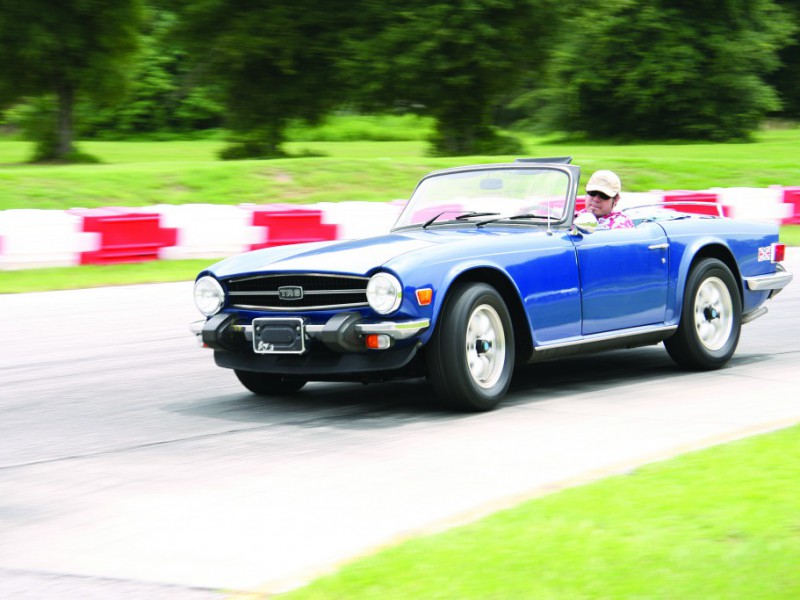
For years the Spitfire has gotten a bum rap from some enthusiasts. In reality, its Italian-designed sheet metal covers a roomy cockpit and excellent suspension.
Despite having a curvy Italian body, strong sales numbers and a class win at LeMans, the popular, gutsy Triumph Spitfire gets little respect in the sports car world. The first cars had a few quirks—most fans will admit that—but most were cured by 1971, making the Spitfire a fun run-around-town car. Modifications can transform the Spitfire into a formidable autocross contender or fun weekend companion.
We say Spitfires—especially the 1971-’80 Mark IV and 1500 models—are a worthy addition to anyone’s driving options. They’re affordable, simple to work on, and easy to upgrade in terms of performance and handling. High production numbers mean there are plenty around for sale, and there are many owners who can offer support.
Even when introduced in 1962, the Spitfire was miles ahead of the the competiton—the Triumph had a larger engine, independent suspension, front disc brakes, roll-up windows, lockable rear trunk, and tilting front hood. Its 1147cc engine featured 63 horsepower and the car had a top speed of 91 mph.
When Giovanni Michelotti redesigned the car for 1971, he eliminated the hood seams and awkward raised front bumper. He also squared off the rear end providing a larger trunk. This Mark 4 car also got a fully synchronized transmission, slotted wheels, and a new rear spring to prevent wheel tuck on hard cornering. Even though the engine had already grown to 1296cc, unfortunately it was choked by emission controls and produced less than 50 horsepower at that point.
Introducing the 1500
A big change occurred for the 1973 model year, as Triumph released the Spitfire 1500 model. As the name suggests, the model now featured a 1500cc engine—1493cc to be exact.
The new engine had just a few additional horses, but the increased torque—an extra 10 lb.-ft—gave the Spitfire acceleration again. Suspension was also enhanced with a stiffer front anti-roll bar and a wider track that featured longer axles. Guards on the bumpers and a low front spoiler are identifying details. In 1975 the Spitfire got a better-shifting single-rail transmission, and in 1977 it received a smaller 13.5-inch steering wheel and column ignition switch.
Even though the price and weight went up while the performance went down due to federal regulations, sales remained strong through the ’70s. When the last Spitfire rolled off the assembly line in August 1980, it capped total production at 314,342 cars.

The Spitfire was known for roominess—plenty of legroom, lots of luggage space and a spacious engine compartment.
The Spitfire was popular and successful in racing circles, too, thanks to its relatively light weight, narrow body, low center of gravity and independent rear suspension. It dominated American small-bore sports car racing in the ’60s and ’70s, scoring numerous SCCA Runoff wins in the F Production and G Production classes, as well as eight Solo II autocross national championships.
Buying Advice
Rust is always a prime consideration when considering a purchase; check the floors, battery box, the rockers around the rear fenders and the area around the support tubes for the front bonnet. On the ’71 and later models, the frame extensions to the rear bumper that were added for strength are open ended, so water can drip in and cause rust.
The engines are rugged, but be sure to check the thrust washers that hold the crank in position as they are prone to wear. Transmissions can be rebuilt for less than $500. Listen for a whining noise in the back while driving—that may indicate there is low oil in the rear differential.
Rear wheel bearings need to be replaced if the grease fitting on the rear axle is dried out. Be prepared for a full suspension and driveline rebuild. Rear leaf springs, lower A-arm ball joints, rear U-joints and bushings all wear out. Fortunately replacements are a phone call away.

Thanks to high production numbers, Spitfires are still plentiful and reasonably priced. There are loads of parts and upgrade kits, as well as club support. It’s hard to beat for low-cost sports car fun.
For a basic restoration, Moss supplies body panels, floor pans, front air dams, carpet kits, upholstery kits and convertible tops. The body-on-frame construction makes it easy to put this car back together.
For aesthetics you can add aftermarket wheels: Moss supplies Minilite reproductions, Panasports and conversion kits for wire wheels. You’ll have options on steering wheels too, with wooden or leather wheels in 13-, 14- and 15-inch diameters.
Performance Upgrades
First things to do on a Spitfire 1500 engine is to drop in a Pertronix electronic ignition and a Hayden electric cooling fan, says Moss technical expert Ken Martin. Pop out the temperature gauge and replace it with a split gauge that displays oil pressure as well as temperature, he adds. An oil cooler kit is also available.
Moss recently introduced a five-speed conversion kit that features a European Ford gearbox. Everything needed is included, such as drive shaft, pressure plate, clutch disc, U-joints, shifter and speedo cable. “The final ratio is higher than the original gearing, and will give you the same ratio as if you had overdrive in the car,” Martin explains.
Next, for more power you’ll want to swap out the stock single Stromberg carburetor. The best setup is two SU carburetors, Martin says, but you’ll need a used earlier intake to make the conversion. But he says the side-draft Weber compares in horsepower gain, while the downdraft Weber is kinder on fuel economy. Owners will need to consider the legalities of carburetor changes.
Adding a performance header and free-flow exhaust system provides more pep, says Martin. There are a number of header options available.
 Spirited Handling
Spirited Handling
To provide better balance to the suspension, Martin recommends the Lowered Fast Road Spring for the front end. “It keeps the front end as flat as possible and supports the shock absorbers so they can’t compress as fast,” he says. Combine this with a stiffer 7/8-inch anti-sway bar, polyurethane bushings rather than the stock rubber bushings, stiffer Spax shocks front and rear, and the Quick Steering Rack for spirited driving, he advises.
Of course at this point you’ll want to upgrade brakes, so go with DBA drilled and slotted rotors, ceramic brake pads and stainless steel braided hose sets, says Martin.
“Spitfires are great looking cars with sensuous lines,” says Martin. “They’re reliable and there will always be parts availability. And what’s nice is that there are a ton of things you can do to perk them up.”
Insider’s Info:
• The Spitfire was first on the drawing boards at Standard Triumph back in 1957. It was known as The Bomb.
• Spitfire outsold the Midget/Sprite every year except 1969, the year a labor strike cut production at Triumph.
• The black rubber bumpers are unique to the 1979 and ’80 models.
• Spitfires have earned more than a dozen SCCA National championships plus a LeMans win.
• The Spitfire is based on a shortened Triumph Herald frame and running gear.
• The entire front end—bonnet, fenders and bumper—flips forward, allowing excellent engine and front suspension access.
• You can pick up a decent Spitfire for about $1000 and fully restore it for less than $5000 if you do the work yourself.
• Some owners have built what is known as a Spit 6: A Spitfire powered by the inline six-cylinder engine found in the Triumph GT6. The swap usually requires the taller GT6 bonnet.
• A favored model is the 1973 1500. It has the revised suspension plus the smallest bumper guards.
• Check out the North American Spitfire Squadron at nasshq.org; they also hold regional and national Spit-Togethers.
Popular Replacement Parts
190-990 – Borg & Beck Clutch Kit
580-100 – Brake Master Cylinder
586-521 – Brake Rotor
835-645 – Water Pump
835-100 – Radiator
660-028 – Major Suspension Kit, front
867-630 – Rear Fender, LH
867-220 – Fiberglass Spoiler, front
867-340 – Rocker Panel, LH
644-330 – Vinyl Seat Kit, black
644-650 – Convertible Top by Robbins, black vinyl
By Kathleen M. Mangan









'Triumph Spitfire: Mark IV & 1500' have 6 comments
August 30, 2012 @ 4:35 pm larry
I just bought my first triumph spitfire mark IV I need to replace the seats so i will have more leg room… also seats need to be lower so i can look threw windshield not over it… anyone have any ideas ……thanks Larry
September 8, 2012 @ 10:57 am larry
I just bought my first triumph spitfire mark IV. I need to replace the seats so I will have more leg room….also seats need to be lower so I can look threw the windshield not over it……….anyone have any ideas ??? thanks Larry..
November 16, 2013 @ 10:26 am James E Konopelski
1975 Triumph Spitfire 1500. Cannot solve rear clicking noise. Rear axles were replaced but did not help. U-joint replacement? Shim u-joints? How do you shim?
December 29, 2017 @ 4:50 am Daniel Blasko
I am presently restoring a 1979 Spitfire with the hideous bumpers, I want to do the conversion to chrome bumpers can you please tell me which years will work.
December 22, 2018 @ 10:40 pm William Bradford
I’m about to purchase a 79 myself. Did you ever get an answer to your question? I was wandering the same thing
November 9, 2019 @ 7:38 am Dan Keenan
Check out the following link to a pdf that walks through the steps. This process includes some cutting but no welding.
http://faculty.cas.usf.edu/garey/triumph/Bumper%20Conversion%20for%201980%20Spitfire%20v3.pdf
Moss Motors also sells an all-in-one kit for the conversion. This kit says it requires welding and bodywork:
https://mossmotors.com/chrome-bumper-conversion-kit